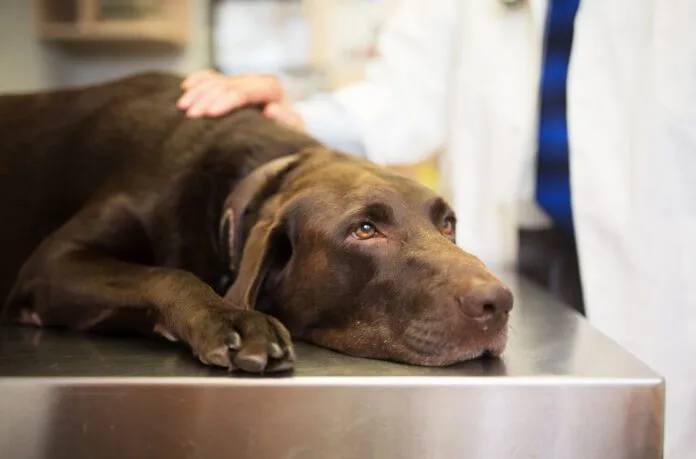Hypoglycemia in dogs is a condition in which your pup’s blood glucose (sugar) levels drop to below normal range. Glucose is a primary energy source in the body and without it or when left untreated, hypoglycemia can have serious or fatal consequences. Ensuring that you have a solid understanding of how hypoglycemia in dogs presents, as well as causes and treatment options, will yield better outcomes for your pup.
Causes of Hypoglycemia
Normal blood sugar levels in dogs range between 3.5-7 mmol/L. Low blood sugar, or hypoglycemia, in dogs is considered anything below 3 mmol/L. Causes of hypoglycemia can derive from either decreased glucose production, increased glucose use or excessive insulin.
Hypoglycemia can be caused by a variety of conditions including:
- Addison’s Disease
- Liver failure
- Cancer
- Insulin overdose
- Malnutrition
- Toxicity
- Delayed meal times
- Insulin producing tumors (insulinoma)
Signs of Hypoglycemia
Understanding the signs and symptoms of hypoglycemia is the first step in identifying and treating the condition.
Signs that your dog is experiencing hypoglycemia include:
- Lethargy
- Weakness
- Muscle tremors
- Low appetite
- Slow response
- Seizures
- Disorientation
- Poor vision
- Trauma
Diagnosing Hypoglycemia
Diagnosing your dog’s hypoglycemia and its root cause will be imperative for proper treatment and management, as well as having a complete understanding of their prognosis.
Using a glucometer is an easy and quick way to evaluate your pup’s blood glucose levels. A glucometer is a small, hand held device that can be utilized for blood glucose checks at home or in the hospital and is often used for diabetic patients. A small pin prick is all that is needed for evaluation and results are immediate. These results will help you and your dog’s veterinary team with next steps.
Further diagnostics may be necessary and include:
- Bloodwork
- Urinalysis
- Abdominal ultrasound
- Radiographs
Treating and Managing
If your dog is experiencing a hypoglycemia episode, he should receive immediate treatment from his veterinary team. Treatment will initially include stabilizing your dog’s glucose levels which can be achieved via oral or intravenous glucose administration such as corn syrup or intravenous dextrose.
Prognosis and future management of your dog’s hypoglycemia will be case specific and depend on your pup’s overall health and official diagnosis. For example, adjusting insulin dosage for your diabetic pup may yield more long-term treatment and management than severe liver failure. Work with your veterinarian closely during this process.
Establishing an emergency at-home plan for hypoglycemia episodes in your dog can be lifesaving.
A few considerations for your at-home emergency plan:
- Knowing your pup’s most common signs and symptoms
- Investing in your own glucometer and understanding how to properly use it
- Establishing an at-home glucose administration plan
- Easy access to your veterinarian and emergency clinic contact (including phone numbers, hours of operation and driving distance to each clinic)
When left untreated, hypoglycemia in dogs can be fatal. However, with early intervention and diagnosis, lifelong management and good quality of life are both possible. Utilizing an at-home emergency plan while remaining in constant communication with your veterinary team can be life-saving.








